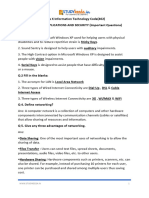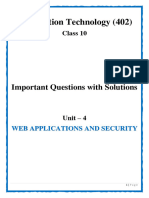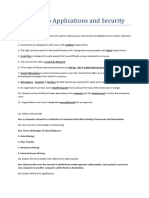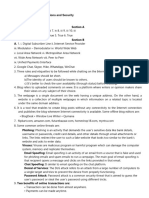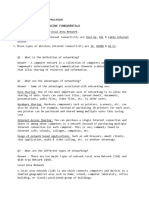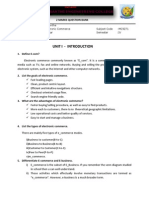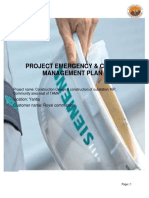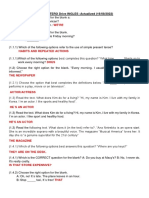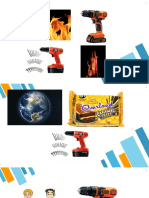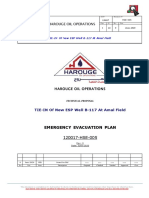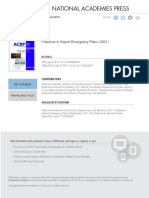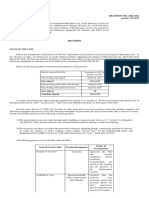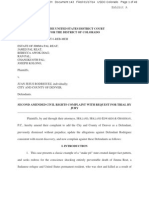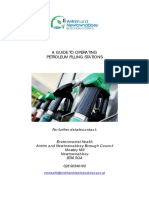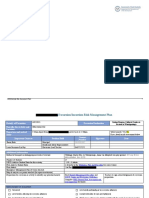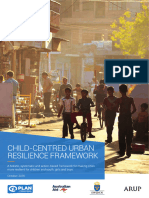Class 10 Web Applications and Security IT (402)
A. Question/Answer
1. What do you mean by Computer Accessibility? Name different types of impairments.
Ans. Computer Accessibility is the user friendliness of a computer system for all, regardless of
their disability.
The types of impairment that impact computer usage are:
● Cognitive impairments and learning disabilities, such as dyslexia, attention
deficit-hyperactivity disorder (ADHD) or autism.
● Visual impairment such as low-vision, complete or partial blindness, and color blindness.
● Hearing impairment including deafness.
● Motor or dexterity impairment such as paralysis, cerebral palsy, or carpal tunnel syndrome
and repetitive strain injury.
2. What is the use of Filter Keys accessibility function?
Ans. It is an accessibility function that tells the keyboard to ignore brief or repeated keystrokes,
making typing easier for people with hand tremors.
3. What is the use of Cursor options accessibility function?
Ans. Cursor Options is an accessibility feature that assists people with vision impairment by
changing the blink rate and width of the cursor.
4. What is the use of Mouse Keys accessibility function?
Ans. MouseKeys is an accessibility feature that assists people who have difficulty using a mouse.
This option uses the keyboard (especially numeric keypad) as a pointing device instead of a
mouse.
5. What do you mean by computer network?
Ans. A computer network is a collection of computers and other hardware components
interconnected by communication channels (cables or satellites) that allow sharing of resources
and information.
6. Explain different types of network architecture.
Ans. The types of network architecture are:
● PEER-TO-PEER (P2P) ARCHITECTURE: Networks in which all computers have an equal
status are called peer to peer networks. Generally in such a network each terminal has an
equally competent CPU.
● CLIENT-SERVER ARCHITECTURE: Networks in which certain computers have special
dedicated tasks, providing services to other computers (in the network) are called client
server networks. The computer(s) which provide services are called servers and the ones
that use these services are called clients.
Page 1 of 5
�Class 10 Web Applications and Security IT (402)
7. What is the difference between LAN and WAN?
Ans. Local Area Network (LAN): A LAN is a computer network that is limited to a local area such
as a laboratory, a school or an office building.
Wide Area Network (WAN): A WAN is a computer network that spans a wide geographica area
such as cities, countries and continents.
8. Define the Internet.
Ans. The Internet is a global system of interconnected computer networks that use the standard
Internet protocol suite to serve billions of users worldwide.
9. What are the advantages of Networking?
Ans. The advantages of networking are:
● Data Sharing: One of the most important uses of networking is to allow the sharing of data.
● Files transfer: Users can send text files, spreadsheets, documents, presentations, audio
files, video files, etc. to other users.
● Hardware Sharing: Hardware components such as printers, scanners, etc. can also be
shared. For example, instead of purchasing 10 printers for each user, one printer can be
purchased and shared among multiple users thus saving cost.
● Internet Access Sharing: You can purchase a single Internet connection and share it
among other computers in a network instead of purchasing multiple Internet connections for
each computer. This is very commonly found in Internet café (browsing centres), schools,
colleges, companies, etc.
● Usage of network based applications: Such as web browsers, email clients, chat
application, audio & video calling, etc. is another advantage.
10. Define a Modem.
Ans. A modem is a device that converts digital computer signals into a form (analog signals) that
can travel over phone lines. It also re-converts the analog signals back into digital signals. The
word modem is derived from its function MOdulator/DEModulator.
11. Write a note on Instant Messaging.
Ans. Instant messaging (IM) is a form of communication over the Internet that offers an
instantaneous transmission of text-based messages from sender to receiver. Most instant
messaging software include the option for performing file transfers, audio chat, video calling and
conferencing, sharing desktops, etc. apart from standard text chat. Instant messaging software is
widely used for personal and commercial use.
12. What are the key features of Instant Messaging?
Ans. The key features of Instant Messaging are:
● Text Messages can be sent to one or more person (Similar to SMS)
● Audio calling and conferencing.
Page 2 of 5
�Class 10 Web Applications and Security IT (402)
● Video calling and conferencing.
● File transfers (Not limited to documents, spreadsheets, audio files, video files, etc.)
● Message history (Save messages for future reference).
13. Write a note on a blog. Name some popular blogging websites.
Ans. A blog is a discussion style site used by non-technical (or technical users) users for creating
personal web pages. Blogs are similar to an online personal diary and simple to use. A blog can
be used to convey messages about events, announcements, news, reviews, etc. Blogs are usually
managed using a web browser and this requires active internet connection. Some offline blog
software can also be used to create content first and later publish the content when an active
internet connection is available.
Some of the popular blogging websites are:
● www.WordPress.com
● www.blogger.com
● www.blog.com
● www.weebly.com
● www.blogsome.com
14. Name some offline blog editors.
Ans. The offline blog editors are:
● Qumana
● Windows Live Writer
● Blogdesk
15. When online shopping could be useful.
Ans. The online shopping could be useful in the following situations:
● A customer does not have sufficient time to visit stores.
● Visiting a store is more expensive than purchasing a product online.
● A product or service that is not available in the local market is available online.
16. Name some of the online transaction websites.
Ans. The some of the online transaction websites are:
● IRCTC, an online portal for booking flight and train tickets.
● Flipkart, an online shopping portal for buying consumer products.
● EBay, an online portal for buying and selling goods.
● Redbus, an online portal for booking bus tickets.
17. What do you mean by Internet Security?
Ans. Internet security is a branch of computer security specifically related to the Internet, often
involving browser security but also network security. Its objective is to establish rules and
measures to use against attacks over the Internet. The Internet represents an insecure channel for
exchanging information leading to a high risk of intrusion or fraud, such as phishing.
Page 3 of 5
�Class 10 Web Applications and Security IT (402)
18. Suggest some guidelines to make passwords stronger.
Ans. The guidelines to make passwords stronger are:
● Keep the length of the password at least 12-14 characters if permitted.
● Avoid keeping passwords based on repetition, dictionary words, letter or number
sequences, usernames, relative or pet names, etc.
● Including numbers, and symbols in passwords if allowed.
● Use capital and lower-case letters.
● Avoid using the same password for multiple sites or purposes.
● Avoid using something that the public or workmates know you strongly like or dislike.
● Use random password generators if possible.
19. Write a note on Firewall.
Ans. Firewalls could be software or hardware and can assist in keeping a computer and a network
secure. Firewalls analyze the network traffic and determine if the traffic should be allowed or not.
In most cases, operating systems such as Linux, Windows or Mac include firewall software as a
part of the operating system thus keeping the computer secure. In rare cases, you may need to
configure your firewall for additional security.
20. What are the standard set of safety rules and procedures to be followed by every
organisation?
Ans. The standard set of safety rules and procedures to be followed by every organisation are:
Basic Fire safety rules
● Fire escape plans must be installed at proper levels
● Conduct regular drills
● Maintenance of safety equipment must be taken care of regularly
Falls and Slips Safety rules
● Workplace must be proper ventilated
● Floors must be clean and dry
● Oil spills, dust must be immediately cleaned.
● Smoke alarms must be placed at proper intervals
● Keep the workplace a no-smoking zone.
Electrical safety rules
● Electrical equipment approved by a recognised organization.
● Damaged and hazardous electrical equipment should be immediately replaced. all old and
workout and frayed switches and wires should be changed.
● Heat emanating equipment should be kept away from the electrical equipment.
● Take care that the outlets/ circuits should not be overloaded
Page 4 of 5
�Class 10 Web Applications and Security IT (402)
21. What is the difference between Accident and Emergency?
Ans. The difference between Accident and Emergency are:
Accident: an accident is an unplanned event that may happen all of a sudden and may lead to
unwanted or unprecedented results/outcomes.
Emergency: any unexpected situation that needs immediate attention and action. An emergency
situation might pose a sudden risk to life, property health etc. and needs intervention to prevent
deteriorating results/ hazards.
22. Name some common types of Accidents.
Ans. Accidents may be of following types :
● Accidents at workplace: Slips and fall accidents, fire
● Industrial disease/illness
● Road traffic accidents
● Clinical Accidents
● Sports related accidents
23. Give some guidelines to be followed to handle accidents.
Ans. The guidelines to be followed to handle accidents are:
● Every organization must follow SOP for accident handling
● Safety measures must be placed to prevent workplace accidents
● Immediately call the medical team for any injury
● Stay alert
● Pay attention to and follow emergency drills
24. Define Evacuation. Write some points to be ensured in case of emergency evacuation.
Ans. Evacuation is the process of emptying a place in case of an emergency, disaster. The points
to be ensured in case of emergency evacuation are:
● Every organization must have an evacuation policy. All the Team Leaders are responsible
for informing the policy to their employees about it.
● Organization must have a designated assembly point for emergencies. Ensure that every
employee/ worker must know where it is.
● A ‘buddy system’ for individuals with special needs or disabilities must be designated. This
system ensures that differently-abled are assisted and guided out of the premises or the
impacted area properly.
● Floor plans with evacuation routes in work areas. Ensure that you understand these so you
can use it in time of need.
● Assembly areas, where you are required to assemble after evacuation, must be properly
taken care of.
● Periodic evacuation drills should be conducted. Ensure that you pay attention during these
drills.
Page 5 of 5







